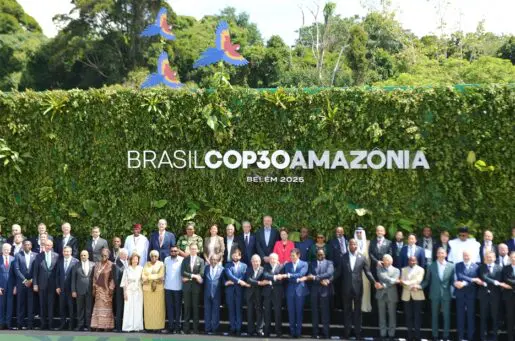Bioethics Forum Essay
Whose Child Is She? The Genetics–Gestation Divide
On May 11, the Israeli Supreme Court handed down its long-awaited ruling in the case known as the “Assuta Embryo Mix-Up.” The case has drawn widespread attention in Israel and abroad — not just because of its heartbreaking facts, but because it forces courts to answer a question that reproductive technology has now raised in many different configurations: When genetics and gestation point to different people, who is the legal parent?
The Story Behind the Case
The facts are tragic. After undergoing IVF at Assuta Medical Center, a woman discovered through genetic testing that the embryo she was carrying wasn’t genetically related to her or her partner. After the child was born, another couple was identified as genetically related to the child. They sought legal recognition as parents and custody, but from the beginning were denied contact, while the woman who gave birth and her partner continued to raise the child.
The case wound its way through the Israeli legal system, with lower courts issuing conflicting rulings — first, the Family Court ruled in favor of the couple genetically related to the child, declaring them her legal parents. That decision was overturned by the District Court, which recognized the woman who gave birth and her partner as the child’s legal parents.
By the time the case reached the Supreme Court — more than two years after the child’s birth — the stakes were deeply shaped by the passage of time and the bonds that had developed. Still, the legal question remained: How should legal parenthood be determined in such a case?
The Court’s Answer: Gestation, Not Genetics
The majority opinion, written by Justice Yael Willner, held that under Israeli law, the woman who gave birth is the child’s legal mother, and her partner is likewise recognized as a legal parent. The opinion rooted its analysis in existing statutory frameworks, especially the Egg Donation Law and Surrogacy Law, which recognize gestation as a legally significant tie and do not grant automatic legal status to genetic contributors.
Under the Egg Donation Law, the egg donor (the “genetic mother”) is not considered the legal mother; the woman who gives birth (the “gestational mother”) is. Likewise, the Surrogacy Law requires intended parents — even if genetically related — to secure a parentage order. The law even contemplates the possibility of a surrogate changing her mind. If that happens, parenthood doesn’t automatically follow genetics — it remains with the gestational mother unless a court rules otherwise. While the majority recognized that this was not a typical surrogacy case, it found the parallels instructive: In both contexts, the law must weigh competing claims between genetic connection and the act of gestation.
Although those statutory analogies did much of the legal work, the majority also pointed to the best interests of the child as an important factor. By the time the Assuta case reached the Supreme Court, the child had been raised for more than two years by the woman who gave birth and her partner, both of whom had cared for her through significant medical challenges. The majority emphasized the psychological and emotional bond that had developed between them, noting that severing that relationship could be harmful.
The Dissent: Intent Matters, and So Does Harm
Justice Daphne Barak-Erez dissented. She argued that the majority had imported legal concepts from surrogacy law into a context where they don’t belong. In surrogacy, she pointed out, everyone agrees in advance on who the parents will be. There is consent. There is planning. That wasn’t the case here. This was not a surrogacy gone wrong.
Instead, she urged the Court to focus on intent — specifically, the intention that drives individuals to pursue IVF. Couples do not undertake assisted reproduction casually; they endure invasive procedures, physical and emotional hardship, and significant expense to bring a genetically related child into the world. This is a choice made, as Justice Barak-Erez put it, from behind a “veil of ignorance,” before anyone could have known they would be the victims — or beneficiaries — of the error.
Justice Barak-Erez pointed to U.S. case law, especially the California Supreme Court’s decision in Johnson v. Calvert (1993), which gave rise to the “intent-based” model of parenthood. While the classic form of this model depends on clearly expressed roles and agreements, Justice Barak-Erez argued that its underlying principle — the centrality of reproductive intent — still applies in cases of mistake.
She also raised broader ethical concerns. Severing the child’s connection to her genetic parents, she warned, could cause existential harm — not just for them, but for the child herself. What would it mean, she asked, for a child to grow up knowing that her genetic ties were legally erased, through no fault of her own?
Finally, Justice Barak-Erez criticized the procedural dynamics of the case. From the outset, the genetic parents were denied access to the child. By the time the courts weighed the child’s best interests, the bond with the birth parents was already entrenched — and the genetic parents were effectively strangers. For Justice Barak-Erez, this was not a neutral starting point — it was shaped by the very injustice the legal system was meant to correct. In her view, the Court’s ruling did not resolve that wrong but instead reinforced it.
Competing Models of Parenthood
In our co-authored article, The Misplaced Embryo: Legal Parenthood in Embryo Mix-Up Cases, we explored how different legal systems might approach disputes of this kind (full disclosure: our work was cited by the dissenting opinion in the Assuta Embryo Mix-Up case). We outlined four dominant approaches for assigning legal parenthood: (1) gestation, (2) genetics, (3) the best interests of the child, and (4) recognition of multiple legal parents or the allocation of partial parental rights.
The Assuta case illustrates the particular complexities these cases present. First, they often produce what we called a “Solomonic conflict” — a painful, zero-sum choice between two deeply compelling claims to parenthood. This dilemma arises especially in legal systems that resist recognizing more than two parents, as most still do in this context.
Second, such cases involve what we termed “unbalanced gestational labor”: a woman ends up carrying a child for someone else without her consent or knowledge, unlike in surrogacy arrangements where roles are defined upfront. Of course, a rich body of legal and bioethical literature has struggled with the idea of a surrogate changing her mind, sometimes even framing it as a “changed self,” but in typical surrogacy cases there is an initial intent that the parties share and document; not so here.
The Israeli Supreme Court majority ultimately grounded its decision in a combination of gestational ties and the best interests of the child. It treated the woman who gave birth as the default legal mother and then reinforced that conclusion by emphasizing the child’s continuity of care, her strong emotional attachment to the couple who raised her, and her medical vulnerability.
Still, the majority stopped short of setting a broader precedent for future embryo mix-up cases. It interpreted the law as it stands but did not articulate a comprehensive framework for assisted reproduction disputes. In our article, we emphasized the need to move away from ad hoc adjudication and toward legislative and regulatory solutions. We recommended that legal systems adopt two guiding principles: First, consistency of values across all assisted reproductive contexts — so that principles applied in embryo mix-up cases align with those used in surrogacy and gamete donation; and second, mandatory informed consent that includes full disclosure of the risks of IVF, including the possibility of these kinds of errors. While no such regime is perfect, it is better to set clear default rules — while allowing some contractual flexibility — to avoid inconsistent rulings and better protect the individuals involved in these deeply consequential cases.
What Comes Next?
The fate of this child and these families is, for now, legally settled. But the story may not be over. The genetic parents have announced that they are seeking a further hearing — a rare and exceptional procedural mechanism that allows the Israeli Supreme Court to revisit its own ruling in cases that raise novel legal questions or issues of broad public importance. Regardless of whether that request is granted, the ruling leaves many questions unanswered about how similar cases will be handled in the future. If gestation prevails, does that mean genetic ties can never prevail? What about reproductive intent, especially when formed long before the mix-up? Should the law recognize more flexible models of parenthood — including the possibility of more than two legal parents?
These aren’t abstract or hypothetical questions. They go to the heart of how the law understands family, identity, and responsibility in an era of reproductive technology. As more families rely on assisted reproduction — and as the technology continues to evolve — the law will need to adapt. The Assuta Embryo Mix-Up case won’t be the last.
Shelly Simana, SJD, is an assistant professor at Boston College Law School.
Vardit Ravitsky, PhD, is president and CEO of The Hastings Center for Bioethics. @VarditRavitsky
Glenn Cohen, JD, is Deputy Dean and James A. Attwood and Leslie Williams Professor of Law at Harvard Law School and faculty director of the Petrie-Flom Center. @CohenProf
This essay was originally posted on the Petrie-Flom Center Bill of Health blog.














“They go to the heart of how the law understands family, identity, and responsibility in an era of reproductive technology.”
It is striking that the authors fail to mention that these questions also go to the heart of how the law understands family, identity, and responsibility in an era of direct to consumer genetic testing. In applying the “best interests of the child” standard courts can no longer assume that issues like this will remain closely held within the immediate families of those involved. There is a growing body of evidence in the adoption and NPE communities that people who are not raised by biological relatives find an almost instantaneous and profoundly healing relationship with newly discovered genetic relatives. So, while this case is heart breaking, in the era of direct to consumer genetic testing “the best interests of the child” standard must weigh new evidence that genetics plays a profound role in one’s sense of family and identity. It is something of a motto in the “DNA surprise” community that keeping a genetic secret is never good for the child. One would assume that this child we be aware (in age appropriate ways over time) of the legal issues concerning their parentage and I certainly wouldn’t want to explain to my child that I fought to keep them away from genetic relatives who had sought their custody.
You are absolutely correct. I have spent going on 30 years reuniting families separated by absent parents who were willing gamete and embryo donors as well as families separated by formal adoption and general abandonment of responsibilities. The best interests of the child approach is problematic because law is supposed to be blind to anyone’s best interests and instead is supposed to focus on facts that are the same for all people. All people have parents who reproduced and caused their existence and if some people have those parents named on their birth certificates then all people should in order that all people be equally situated at birth. The fact that some people lie undermines what an entire family knows to be true about themselves and who they are related to. Birth certificates are vital records of the health of the people named on them and naming the wrong people on the birth certificate makes it medically worthless. The court erred in allowing those strangers to keep the baby. This is kidnapping. The person born should have their right to be raised by their own parents protected. It is horrible that they kept the baby.
Fascinating case, to be sure, and much to unpack. Full agreement on your recommendation about broader consent at the time of IVF as we accrue more (& more) unintended mistakes that generate more unfortunate “Solomon’s choice” scenarios.
Another, easily imaginable scenario may be that a less financially fortunate couple, with prior knowledge that the female cannot carry, pursues IVF after years of saving, as step 1 in their process of building a family. Step 2 , for which they are now saving, involves an appropriately contracted/informed/paid surrogate to carry their embryo to term. And it is as this point (eg; before they can afford the surrogate) that their embryo is mistakenly transferred and carried to term by another woman in a similar way as occurred in this case.
This adds a justice/injustice component to the “genetic parents’”position that carries ethical, though likely not legal, weight.
Thus, in the absence of an error-free system of storage and distribution; the importance of as fully informed a consent process as possible – which includes making prospective parents aware of mistakes and their implications – is absolutely critical.
And while prospective conveyance of that information at the time of IVF may not eliminate the emotional pain of such a mistake to the “genetic parents” one hopes that it may create deeper empathy across all parties; parents, legislators, judges and society alike.
I was unclear whether the authors agreed with the judge’s decision in this case. I get that it leaves other questions that are likely to arise unanswered, but do the authors agree that, in this case, the woman who gives birth should be the legal mother for rearing, custody, and visitation purposes?